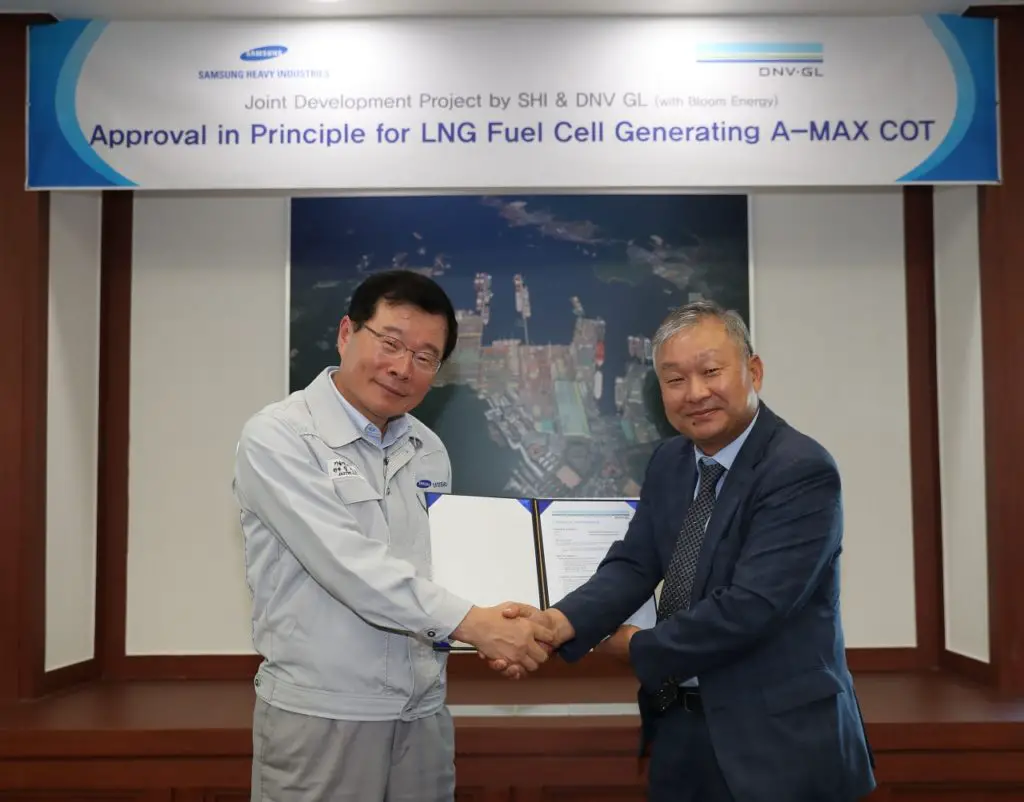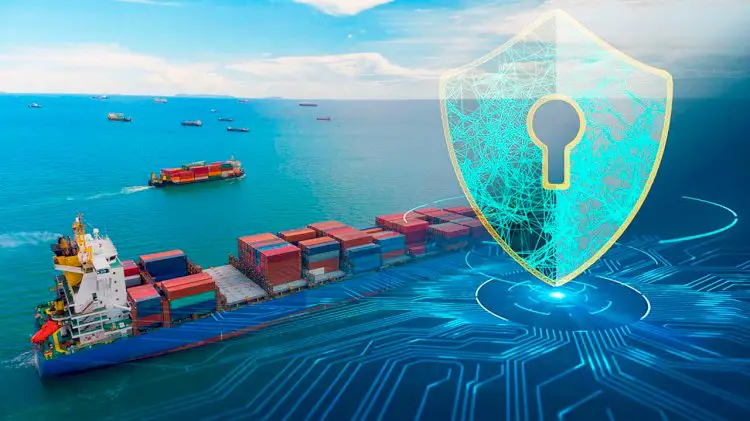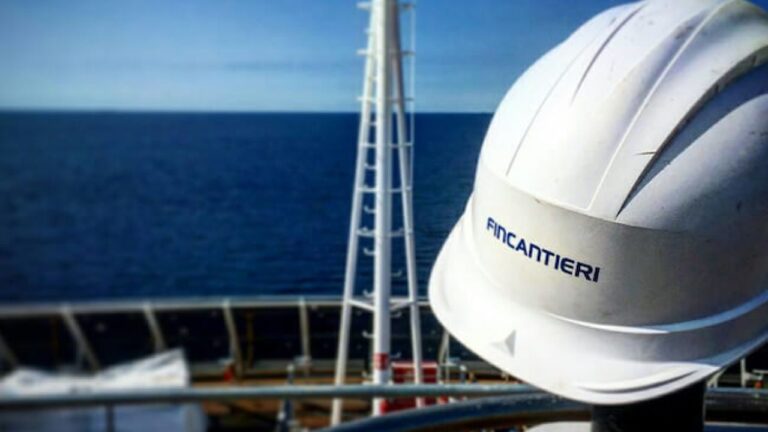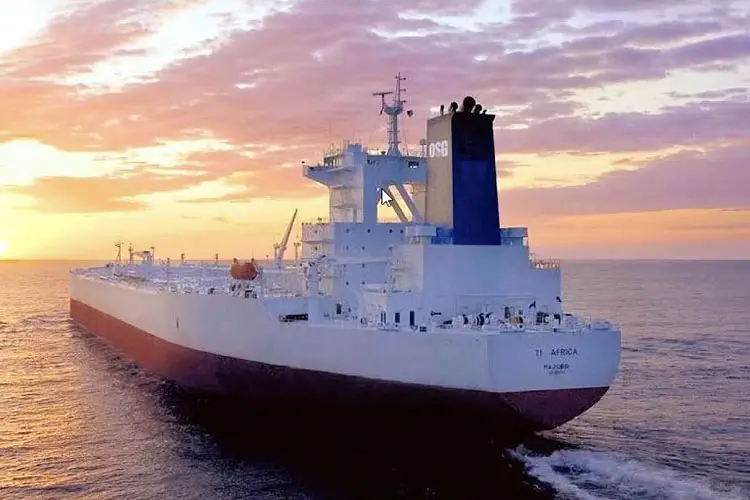SHI To Become The First Shipbuilder To Develop COTs Powered By Fuel Cells

SHI To Become The First Shipbuilder To Develop COTs Powered By Fuel Cells
DNV GL gave SHI AiP for the A-max Tankers that use fuel cells which are more efficient and reduce the emission of the greenhouse gases. As the IMO forces shipbuilders to reduce GHG emissions by 30% since 2025, the introduction of fuel cells is inevitable, said an official of SHI.
The use of hydrogen has brought in a great competitor in the LNG fuel cell race. This will further develop the vessels that are powered by clean energy.
The world’s first Aframax crude oil tankers (COTs) has been developed by Samsung Heavy Industries, making it the first shipbuilder to do so. It applies fuel cells that limit CO2 emissions thereby adhering to the IMOs regulations and making its vessels eco-friendly.
SHI made an announcement about receiving the AiP for the fuel cell powered A-max COTs from DNV GL on the 26th of September.
The new fuel cell powered COTs are an eco-friendly replacement for the oil-based power generators which have solid oxide fuel cells and use LNG as fuel. This will not only improve the energy effeiciency but will also reduce the emission of greenhouse gases.
By replacing 3MW generator engines with the fuel cells in an A-max COT, the emission of GHG can be reduced by 45% which is equal to removing 10,000 combustion-powered cars from the roads worldwide.
The SOFCs that boast the stability of the vessels were commercialized by the Bloom Energy of the U.S. for the first time. The fueling system and power control system for fuel cells that are the core manufacturing process were developed by the Samsung Heavy Industries themselves. It is the first shipbuilder to get an AiP for COTs that are powered by fuel cells, have high volumes and can be deployed without changing the design of the vessels.
SOFCs can use hydrogen as a fuel for fuel cells along with LNG. In addition to this, it is being anticipated that on the basis of the approved technology zero-emission hydrogen vessels will be built.
As regulations to reduce GHG emissions take effect step by step, the introduction of fuel cells to vessels is inevitable. This approval and being the first shipbuilder to secure this marine fuel cell technology illustrates that Samsung Heavy is highly likely to lead the market, said Kyunghee KIM, Vice President of SHI.
The IMO since 2018 has been stressing over the setup of Energy Efficient Design Index (EEDI) by taking steps to reduce the generation of GHG from vessels and also to maintain the target from the time that the vessels are designed.
According to the IMO regulations, the IMO registered ships are to decrease emissions by 10% from 2015, 20% from 2020, and more than 30% from 2025 compared to the 2008 level. Recently, IMO has become even stricter about its regulations. Thus, there are discussions going on that the targets will be strengthened to 40% in 2030 and 70% in 2050.
Reference: SHI






